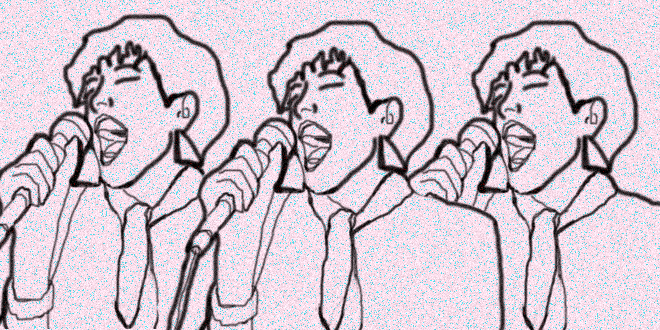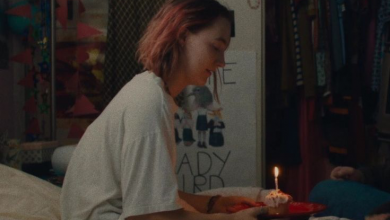Women of Rock Oral History Project: Dismantling the Rock Canon

Image by Valeria Cardona
When we think of rock ‘n’ roll, our minds often head straight for bands like Led Zeppelin, The Rolling Stones, or Pink Floyd. We picture rocks stars with leather jackets and shaggy hair yelling into a microphone while their fans sing along. However, if we look a little closer, we see that there is something else these well-known rock stars have in common: they’re all men.
Equipped with a volunteer cinematography team of close friends, experience with archival practices, and a passion for gender equality, Tanya Pearson and the Women of Rock Oral History Project are here to change how rock is studied and popularized. As a student at Smith, Pearson became frustrated with the lack of information available on women in rock. Taking matters into her own hands, she began to call up artists such as Veruca Salt to see if she could interview them, and the project took off from there. Now, with a website full of interviews with artists all over the country and plans for a documentary and book, Pearson is building an oral history archive that can change our preconceived notions of rock ‘n’ roll icons.
Rewriting rock history is a huge undertaking and Pearson does not take this task lightly. While the end product may be a single hour-long video, the production process itself takes many days, starting with Pearson studying the artist in detail. She reads any books they wrote, studies information that can be found in archives, and conducts thorough internet research to enter the interview prepared to create a comprehensive oral history. She has prompting questions ready based on what she learned ahead of time, but the main goal of the interview is to let the artist tell their own story.
“With oral history the main point is that it’s supposed to be completely objective and you’re giving the person that you’re talking to the space to say what they want to say in the way they want to say it.” Pearson starts her interviews not at the beginning of each artist’s career, but at the beginning of their life. She continues up to present day, creating a full history of both their professional and personal life. She creates rich histories in order to spark the interest of others and give these artists credit for not just their amazing careers, but also their impressive lives overall.
“As a kid growing up, I’ve always played music and I was always really interested in women who played music. If I found a band I really liked I always wanted to know all about the band members,” Pearson shared. But even more than out of personal interest, Pearson conducts her interviews with the goal of changing how women are represented in the media.
“I just feel like when women are given space in rock media and scholarship, they’re given a certain amount of space. They’re asked pretty much the same series of questions and their experiences are essentialized into this ‘women in rock’ experience,” she explained. Pearson attributes much of this bias to fact that the history of rock has been largely constructed by men, with a glaring lack of women historians and journalists throughout history. Pearson hopes her work will destroy stereotypes of women in rock, creating a fair and comprehensive representation of their experiences.
According to Pearson, “We can look at women’s experiences, which vary greatly – there’s not just one women in rock experience, they’re all different – and we can use these stories, these really full biographies, to rip apart the narrative that exists because it’s not true.” Often, women in rock are treated as an anomaly, with the fact that they played in a rock band treated as so out of character for a woman that there is no other interesting information about them worth sharing. As Pearson has learned through creating oral histories, each woman has a unique story that is worthy of sharing.
“Some women don’t even really consider their gender at all, and never have. Some women, it’s been a major recurring theme or point, and something that they’ve had deal with throughout their years.” Rather than lumping women into a subgenre of rock, they should all be celebrated for the talented and hardworking individuals they are.
As one might expect when attempting to dismantle such a strongly held system of knowledge, Pearson’s work has been met with criticism from members of the group that benefits from this masculine rock canon – the “man babies.”
“I get comments from men sometimes, which is hilarious to me, because they think that me saying that we need to disrupt the rock canon… means I am dismissing Led Zeppelin or whatever… Of course Led Zeppelin is important in the grand scheme of things and is a very important band in rock ‘n’ roll history, but there’s room for everyone,” Pearson explained. Her project is not here to exclude men, but instead make space for those who were never given any to begin with. As she points out, “It’s not because there was ever a lack of women performing or writing, or a lack of women of color or a lack of queer people making music. It has to do with a lack of documentation, and the people doing this documenting have consistently marginalized women.”
Part of Pearson’s goal in changing the canon is that scholars will reference her interviews as primary source documents. These interviews can also be used for the general public to learn about rock stars they may not hear about in the media. Ultimately, though, there is no intended audience for Pearson’s work. She tries to make her interviews as accessible as possible by making everything she can public. Given that not everyone has access to learning about women of rock ‘n’ roll in an academic setting, her project can help make an unbiased rock education more attainable. While representation of women in academia still has a long way to go, Pearson shows us that if we refuse to be complacent, we can begin to make meaningful changes in our society.




